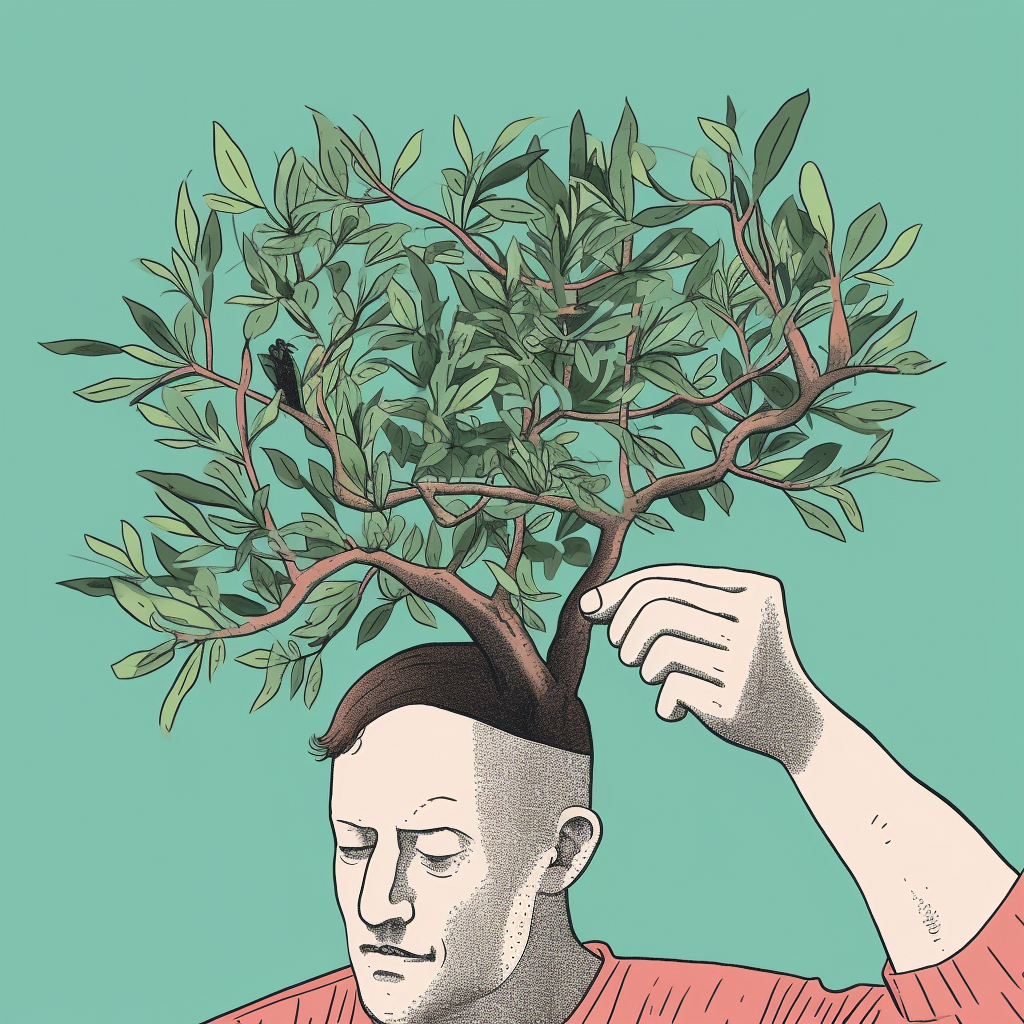
In neuropsychology, pruning is the reduction of axons, synapses, and neurons that occurs naturally and over time. This mainly occurs before sexual maturity but does continue slowly throughout life.
All animals are born with an insane number of neural connections for the organism to grow and develop as it matures. Over time, the unused neural connections gradually disappear as animals age. Its one of the mechanisms behind being able to learn new skills at a younger age at a faster pace, although the environment of youth and full-time education do make a marked difference as well.
Understanding Pruning: The Garden of the Brain
Imagine the brain as a lush, overgrown garden. In this garden, there are countless plants (neurons), each with branches (axons) and leaves (synapses). The gardener (our brain) trims and prunes these plants over time, keeping only the most essential and healthy parts.
This process, much like pruning in a garden, helps the brain stay efficient and organized. By cutting away unnecessary connections, it clears up valuable resources and space for new growth.
Snip, Snip: How Pruning Works
Pruning is an essential part of brain development, which helps to refine neural networks and improve the brain’s overall functioning. As the brain processes new information and experiences, some connections become stronger while others weaken. The stronger connections are maintained, while the weaker ones are pruned away.
This process can be thought of as a sculptor chipping away at a block of marble to reveal a beautiful statue. The sculptor (brain) carefully removes unnecessary material (unused connections) to create a more efficient and optimized neural structure.
Why Pruning is Important: The Benefits of Brain Trimming
Pruning plays a significant role in cognitive development and overall brain health. Here are a few reasons why this natural process is so important:
- Efficiency: By eliminating weaker connections, the brain can send signals more quickly and effectively through the remaining strong connections.
- Adaptability: Pruning helps the brain adapt to new experiences and learn from them, making it better equipped to handle future challenges.
- Resource allocation: Removing unnecessary connections frees up energy and resources for the brain to use elsewhere, such as in learning new skills or forming new memories.
The Art of Pruning: Factors That Influence the Process
Several factors contribute to the pruning process, including:
- Genetics: An individual’s genetic makeup can influence the rate and extent of pruning.
- Environment: The environment, including exposure to new experiences, plays a crucial role in determining which connections are strengthened and which are pruned away.
- Age: Pruning occurs most intensely during childhood and adolescence, but continues at a slower pace throughout adulthood.
Real-life Examples of Pruning: Seeing the Process in Action
To better understand the concept of pruning in psychology, let’s look at some real-life examples:
Example 1: Language Learning
Children have a remarkable ability to learn new languages, thanks in part to the pruning process. When exposed to multiple languages, their brains form connections to process and understand each one. Over time, connections related to the languages they use most frequently are strengthened, while those related to less-used languages are pruned away.
Example 2: Skill Development
Consider a child learning to play the piano. At first, their brain forms many connections as they process new information about reading sheet music, finger placement, and rhythm. As they practice and become more skilled, the brain strengthens the most important connections and prunes away those that are less relevant or redundant. This allows the child to play more efficiently and accurately.
Example 3: Memory Formation
When forming new memories, the brain creates multiple connections between neurons. As time passes, some of these connections weaken and are pruned away, while others remain strong. This is why certain memories can become hazy or fade entirely, while others remain vivid and clear.
In conclusion, pruning is an essential process in brain development and maintenance, allowing for efficient cognitive functioning, adaptability, and resource allocation. Through pruning, the brain can learn, grow, and adapt, just like a well-tended garden. With a better understanding of this process, it’s easy to appreciate the wonders of the human brain and the remarkable abilities it possesses.
How to Encourage Healthy Brain Development
While pruning is a natural and automatic process, there are steps that can be taken to support healthy brain development and encourage the formation of strong, useful connections. Here are some tips for fostering an environment that promotes optimal pruning:
Nurture a Love for Learning
Fostering curiosity and a love for learning in children and adults alike can encourage the formation of strong neural connections. By engaging in new experiences and learning opportunities, the brain is continually challenged, helping to create a rich and adaptable neural network.
Provide a Stimulating Environment
A diverse and stimulating environment can help build a strong foundation for brain development. For children, this means exposure to a variety of experiences, such as play, art, music, and nature. For adults, this might involve pursuing hobbies, engaging in social activities, or participating in continuing education.
Stay Active
Physical activity has been shown to have numerous benefits for brain health, including promoting the growth of new neurons and supporting the pruning process. Engaging in regular exercise can help keep the brain sharp and healthy throughout life.
Prioritize Sleep
Getting adequate sleep is essential for healthy brain function. During sleep, the brain consolidates memories, processes new information, and carries out essential maintenance tasks, including the pruning of unnecessary connections.
Embrace Challenges
Challenging the brain with puzzles, problem-solving tasks, or learning new skills can strengthen neural connections and promote pruning. By continually pushing the boundaries of what the brain can do, it becomes more efficient and adaptable.
Pruning: An Ongoing Journey
As a journey through life, the brain continues to develop, adapt, and prune its connections. This ongoing process helps individuals learn, grow, and thrive in an ever-changing world. By understanding and supporting the pruning process, it’s possible to promote healthy brain development and enjoy a lifetime of learning and growth.




